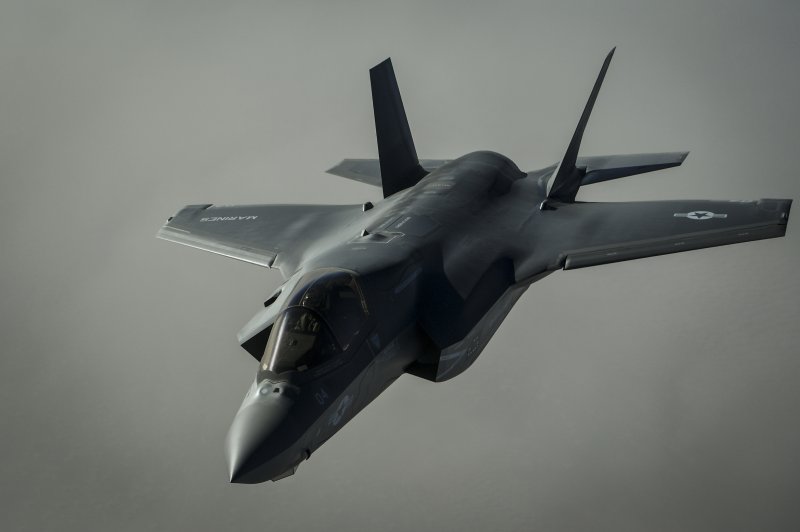A U.S. Marine Corps F-35B Lightning II assigned to the Marine Fighter Attack Squadron 211, 13th Marine Expeditionary Unit, flies over Afghanistan, on Sept. 27, 2018. Photo by Staff Sgt. Corey Hook/U.S. Air Force
Oct. 30 (UPI) -- Raytheon's Ship Self Defense System created the first-ever digital air connection between a U.S. Navy ship at sea and a U.S. Marine Corps F-35B Lightning II Joint Strike Fighter aircraft in the sky.
This provided demonstrated proof of the combat system's ability to pass along digital tactical data from a JSF through a deployed Expeditionary Strike Group, in this case the USS Wasp.
Known as Link 16 Digital Air Control, this capacity gives a tactical, wireless integration between surface ships and aircraft, and offers improved mission efficiency with an expanded situational awareness and interoperability, according to Raytheon.
This new capability plays to the strength of the F-35, which can also collect and share data using its Multifunction Advanced Data Link. The link allows the fighter jet to use its sensors to collect data which it can immediately shared with commanders at sea, in the air or on the ground, giving instant, views of ongoing operations, according to Lockheed.
Link 16 Digital Air Control will allow the F-35 to "quarterback" missions by passing along data to help ships and other aircraft detect targets, deliver mission assignment and engagement status exchange without voice communication and share aircraft status information, like fuel levels and weapons inventory information.
The Navy and Raytheon collaborated to modify the current SSDS baseline, MK 2, to initiate the DAC interface. The successful connection came after 18 months of developing and testing the interface to before delivering it to the USS WASP.
Now, more SSDS ships will be outfitted with the Link 16 DAC capability upgrade, Lockheed officials said.
"Information is key for any Commander -- and shared information from multiple sources and vantage points extends our battlespace and our advantage over enemy threats," U.S. Navy Captain Danny Busch, of the Program Executive Office -- Ship Self Defense System, said in a press release. "Now with the ability to link our sensors and weapons, from sea and air, SSDS is providing a level of interoperability and defensive capability never before available to the Expeditionary fleet."















